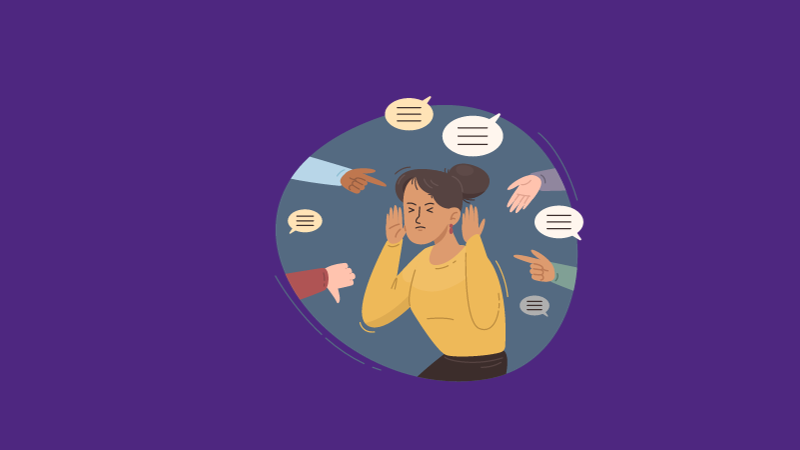Table of Contents
Affiliate link notice: As an affiliate of BetterHelp and other third-party vendors, We will receive compensation if you make a purchase using the links provided on this page. For more information, visit our disclosure page.
Last Updated on July 11, 2022 by Randy Withers, LCMHC
Opioids interfere with a person’s natural homeostasis – or their ability to function physically and mentally as a healthy human being. Sadly, many people become addicted to opioids because they’re in physical pain. Satisfactory healing starts by detoxing drugs from the body.
Opioid detox is one of the hardest things an individual can do. The severity of withdrawal symptoms depends on many factors, including age, weight, and the opioid’s half-life. It is difficult to near-impossible for many individuals to sleep, eat, or think rationally during the early stages of withdrawal.
Given the severity of any substance use disorder, it is important to coordinate your care with a health professional such as your primary care physician.
This article assumes you are already doing that, and looking for ways to ease the symptoms of opioid detox while resting at home.

7 Foods That Help With Opioid Detox
Although eating during an opioid detox may be difficult, it’s essential for individuals to get as many nutrients as they can during withdrawal. Certain foods can support homeostasis, brain health, and quick recovery. Here are seven foods people can eat to help them detox and manage withdrawal symptoms.
Water
It takes longer than a month for people to starve without food. However, the human body can only last a few days without water. Many people experiencing withdrawal symptoms find that they’re too sick to eat anything. That’s okay – what really matters is that individuals drink as much water as they can.
Water can help flush toxins out of the body. It supports brain function and communication with the rest of the body. Drinking water brings oxygen to muscles and encourages healthy bowel movements. Water is the foundation for a healthy body.
Doctors recommend that individuals drink half their body weight in ounces per day. However, many individuals suffer from extreme sweating during withdrawal. This helps flush toxins out of their body, but it also means they need to drink more water than usual.
Sports Drinks
Sports drinks are also a great choice for hydration. They taste better than water and are full of electrolytes – minerals that help the body regulate fluids. Some of these minerals include magnesium, sodium, potassium, and phosphate.
Electrolytes are found in many natural foods. They’re lost through sweating, which is why many athletes use sports drinks after an event or a workout. Sports drinks help individuals quickly replenish their electrolyte levels without having to chew food.
Sports drinks are very different from energy drinks. Any drink with caffeine or performance-enhancing qualities will likely make withdrawal much worse. The goal of eating during detox is to nourish the body, not manipulate it.
Bananas
Individuals going through withdrawal often prefer bland foods like rice, pasta, and crackers. Food without much taste and texture is easier to ingest and keep down. Thankfully, many bland floods are rich in nutritional value and can help with withdrawal.
Bananas are a super-star food for an opioid detox diet. This fruit is filled with minerals like magnesium and potassium, mood-boosting vitamins, and healing amino acids. Bananas help regulate blood pressure and lower anxiety and can even support sleep.
They can also help regulate bowel movements. Bananas are an excellent source of energy and the best part is that they’re cheap. If individuals going through withdrawal can’t eat anything else, bananas will help their bodies heal and recover.
Salmon
One of the worst parts of going through withdrawal is reduced mental function. Opioids work on a neurological level, filling the body with feel-good hormones. When individuals stop taking opioids, their brains can struggle to function for some time.
Eating salmon and other fatty fish can promote healthy brain function. Salmon is full of omega-3s, a healthy fat that improves memory and overall cognitive function. If individuals can’t bring themselves to eat fish, they can try taking a fish oil supplement instead.
Fish is also full of protein and rich in amino acids. These chemicals help the body repair itself at a molecular level, strengthen muscles, and create essential hormones. Eating varied kinds of protein can help individuals recover physically and mentally from addiction.
Leafy Greens
Dark-green vegetables are full of vitamins, minerals, and antioxidants that help the body function at its best. During detox, individuals should try to ingest as many of these elements as they can. If they have been able to keep down bland foods, it’s time to move to a wider variety of fruits and vegetables.
Dark, leafy greens and other vegetables will supply essential nutrients that support homeostasis and well-being from the inside out. Vitamins keep organs healthy and help physical systems run smoothly. They reduce inflammation and may make withdrawal easier in some cases.
A lot of produce is grown with the use of pesticides. If possible, individuals who are detoxing should choose organic varieties. That way, they can avoid introducing new toxins into their bodies during withdrawal. If leafy greens sound inedible, individuals can start with vitamin supplements.
Pasta
Pasta is another bland food that can help sustain individuals until their withdrawal symptoms get better. Make sure to eat whole grain pasta and not the white variety. White flour has been bleached and is devoid of most of its nutritional value.
In contrast, whole grains are made of complex carbohydrates that give people sustained energy. They include vitamins and minerals that can help the body heal. Whole grains also include fiber, which supports healthy gut bacteria and a functioning digestive system.
Whole-grain pasta is easy to chew and doesn’t have a strong smell or unusual texture. It’s also cheap and quick to make. People who feel up to it can add chopped vegetables to their pasta for more nutritional benefits.
Chocolate
Sugary foods won’t help individuals feel better during withdrawal. In fact, some nutritionists have likened sugar to drug addiction because of the way it affects pleasure centers in the brain. People going through withdrawal should avoid sugary drinks and fried or fatty foods.
However, dark chocolate without added sugar can actually be good for recovery. Cocoa is filled with healthy plant chemicals called flavanols. These chemicals are rich in antioxidants that can help people feel better and fight off disease.
Dark chocolate lowers blood pressure, improves heart health, and can reduce the presence of cortisol – a stress hormone – in the body. It also strengthens the body’s immune system and can improve brain function. Individuals experiencing withdrawal can benefit from eating dark chocolate.
Final Thoughts
Eat these seven foods during opioid withdrawal. Individuals need to stay hydrated, especially if they’re experiencing excessive sweating. Sports drinks can offer hydration and help replenish electrolytes. Bananas are a good, bland food to try if individuals are having trouble keeping anything down.
Once symptoms begin to improve, individuals may be able to eat a wider variety of foods. Some nutrient-rich options include salmon, leafy greens, whole grain pasta, and chocolate. Individuals should aim for a balance of healthy fats, protein, and complex carbs.
It can be challenging to eat anything while experiencing withdrawal symptoms. However, good nutrition will help individuals recover and reach a state of homeostasis faster. Use this diet for opioid withdrawal to increase nutrition and manage withdrawal symptoms.
Resources
- SAMHSA’s National Helpline
- Opioid Use Disorder: What to Eat as You Recover
- Substance use recovery and diet









